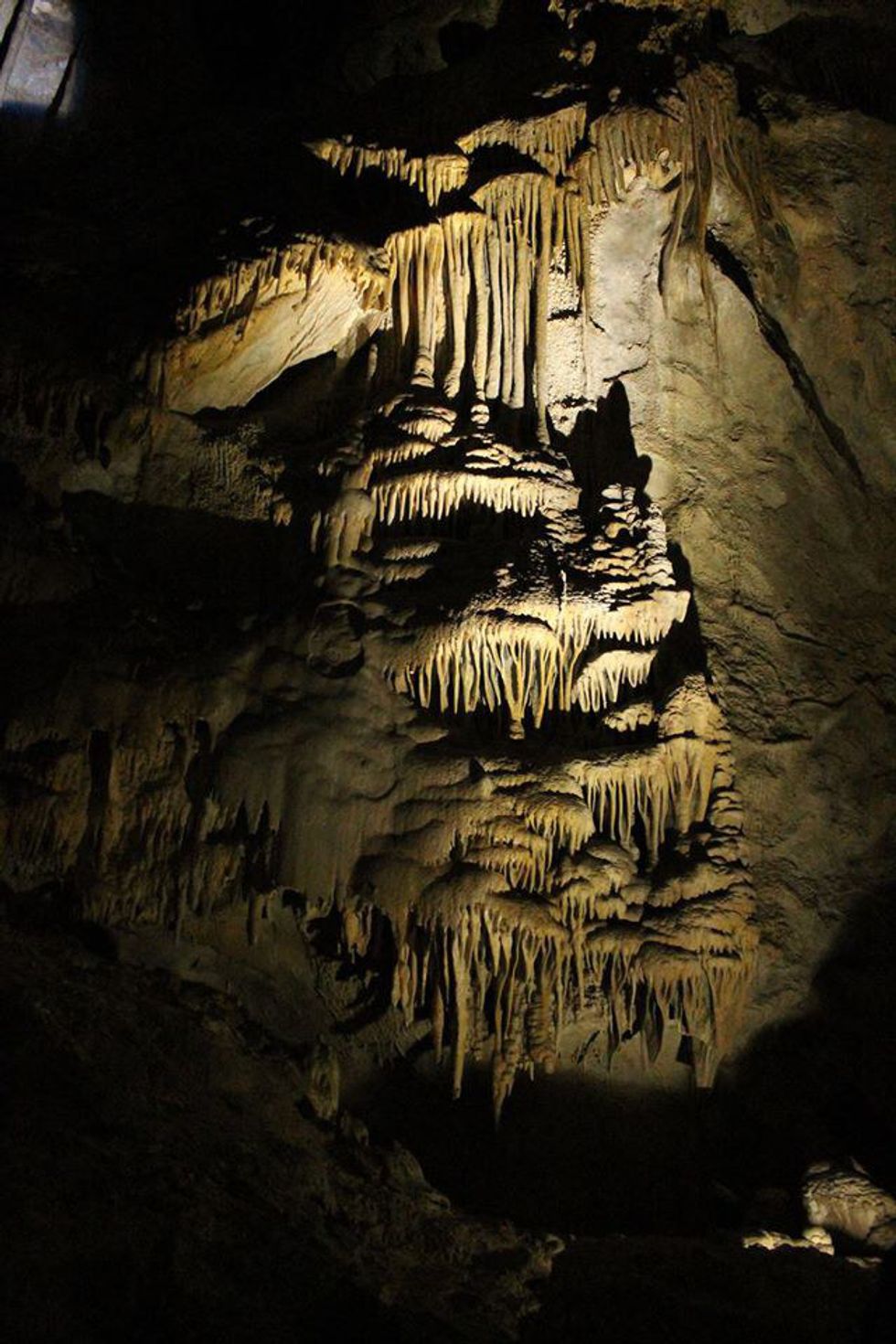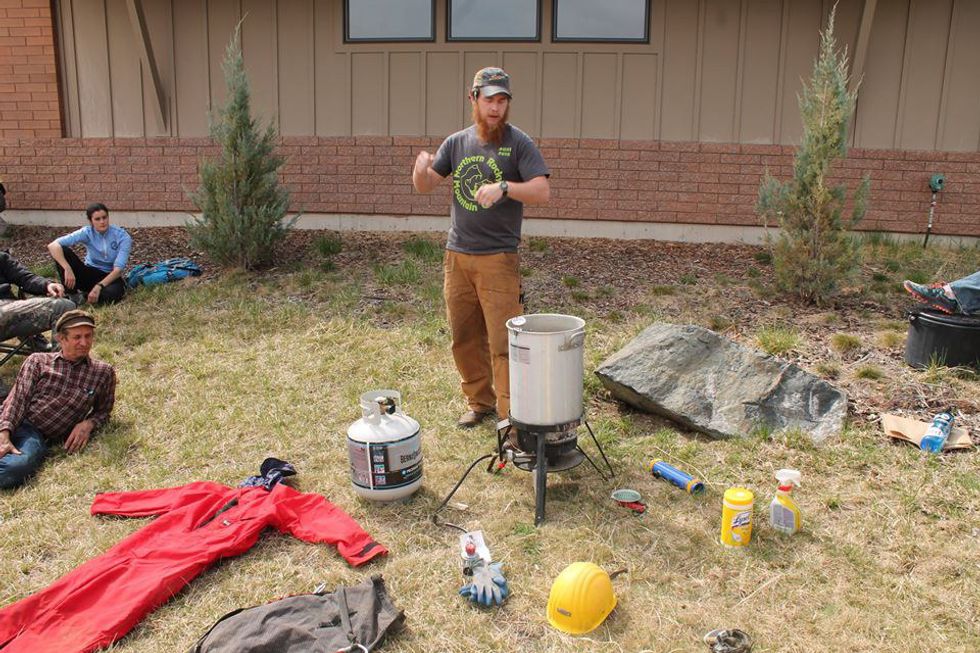There are some really amazing activities you can enjoy in Montana. You can go hunting. You can take a hike just about anywhere and camp where you please. You can go rock climbing, wildlife spotting, visit a National Park, see battlefields, and try a BUNCH of different beers. You can go sailing, paragliding, parasailing, sky diving, skiing, snowshoeing, fishing, and you can even play golf. But in that myriad of choices, you can even explore the deepest darkest places that you'll ever see; caves!
Montana is chock full of caves and every single one is different. Just how many caves are there? Well, we don't exactly know. To know how many caves there are is almost, if not, completely impossible. Cave entrances don't exactly have a sign broadcasting where they are. According to Montana's cave group, the Northern Rocky Mountain Grotto, there are close to 400 caves in the state of Montana, most of which are found on public land.
But that number is only what we have discovered. There can be potentially thousands of which are yet to be found. In the Bob Marshall Wilderness Complex alone, there are over 2 million square acres of forest and under that forest are the perfect conditions for caves, limestone. Limestone, stemming from prehistoric coral and calcium carbonate (according to Geology.com), is an organic sedimentary rock and because of its properties is sometimes called living rock. When water seeps underground it causes the limestone to dissolve. This causes openings to form underground which become cave passages. Overtime, the water leaves the cave (sometimes it doesn't) and the calcium carbonate is left on the roof until moisture carries it to the floor, making a spike-like rock structure in the cave. This is formation known as a stalagmite. If the water evaporates before it can drop the limestone from the roof we call those spike-like formations stalactites. If the two meet up, then we call it a column, or a solid piece of limestone from the floor to the ceiling. There are many more shapes and sizes that Limestone can make and there's a name for all of them like cave bacon, cave popcorn, cave straws, shields, and flowstone to name a few.

These formations are just one reason that we cavers are drawn to these mysteries under the mountains. The challenge is also one. Most of Montana's caves are not easy to get to, not like Mammoth cave in Kentucky or the caves of Texas and New Mexico, where you can drive all the way to the entrance. The caves in Montana require miles of hiking, days of preparation, and once you're in the cave, don't expect the floor to be flat, or the ceiling to be your height. Caves in Montana are more often than not, clammy, cramped, steep holes in the ground no bigger than your waist at the beginning. However, the further you go down, or up in some cases, the wider the holes get and the higher the ceiling, and then you find yourself in one big room, big enough to hold a jumbo jet!
Then there are some of us who come for the wildlife, particularly, bats. Bats are one of the more fascinating creatures on our planet simply because they have adapted to live in caves. Using caves as a place of shelter during the day and take to the skies at night to hunt for their food source. Besides bats, there are spiders and other cave creepy crawlies that call them home, including rodents. Pack rats usually stick closer to the entrance of a cave but all of these animals are worth studying and shows that even a cave, a world of darkness and cold has a functioning ecosystem.

Caves are also a source of exploration. As stated before, we don't know how many caves are in Montana, and we haven't fully explored the caves we already found. In fact, some of Montana's cave systems are the deepest in the continental United States! The fact is, there is always something to new to find when you go caving.
So, why can't you just google a cave? Well, there are a few reasons. Simply put for one, caves are dangerous. If you don't know what you are doing, you could wind up a permanent resident of the fine collection of cave formations you went to go see, so please if you do find a cave, where a helmet, go with somebody, and have multiple light sources with plenty of battery power. You don't want to be in a place naturally pitch black with no light, or in a room surrounded by rock without head protection.

Caves are also very sensitive. You need to go into a cave knowing that these are fragile systems of life. In fact, the oils in our fingers kills the ability for limestone to grow and the mud in the caves that gets on your boots and hands can also inhibit formation growth, so wear gloves and even if you have them, enjoy the limestone with your eyes. Caves are also very stagnant. There is little to no airflow, the temperature is relatively constant and sunlight is nonexistent. Think of it like walking on the surface of the moon. Wherever you step, your footprint will stay there for a very long time, so with that in mind, make sure that when you go into a cave you aim to make as little an impact as possible. That means leaving the bats alone too. Bats are highly sensitive creatures to light. While they may not have good eyesight, shining a light causes them to wake up prematurely from their hibernation, and if you wake up a bat repeatedly, they will burn through their fat stores and starve to death. For this reason, it is imperative to be very careful not to shine your light on on a bat in a cave and walk and talk quietly.
You also need to clean up before and after you go caving. Use gear that is squeaky clean, especially if it is from out of state. There is a disease that spreads from fungal spores known as White Nose Syndrome and it has swept through the country from Europe and it has killed millions of bats. Though no known strain has been found in Montana, we'd like to keep it that way. There are ways to ensure that you have no fungus on you and these methods can be found at www.whitenosesyndrome.org. We'd rather err on the side of caution than sacrifice our bat population to this horrendous disease.

Because of all of these reasons, caving communities do not give out cave locations to members of the public. Caves are special places. If not treated properly, they will be gated off, by either private land owners or the public land agency that the cave falls inside of (BLM USFS, etc). You need to know the caving etiquette and how to safely navigate a cave. They can be fun places to explore and learn, but only if you know how to treat them.
If you still want to be a caver, then a good place to start is the Lewis and Clark Caverns State Park. Located between Butte and Bozeman, Lewis and Clark caverns State park is a commercial cave that doubles as a bat hibernaculum, or sleep zone (in the winter) and is full of amazing cave formations (like the ones you've seen in this article). The Northern Rocky Mountain Grotto (NRMG) is also a great step in being a caver. An organization made wholly for the exploration, preservation, and education of Montana's caves, the NRMG also leads workshops on proper cave etiquette, vertical caving, and has some fun filled events like the newly formed Cave Camp, and our annual meetings. The NRMG actively works to point their members in the direction of exploring the deep, dark, cold places that we love to dive into. I hope this has shed some light on a rather dark subject and I hope this got you a little curious to explore the underground.
Stay safe and cave on!



















